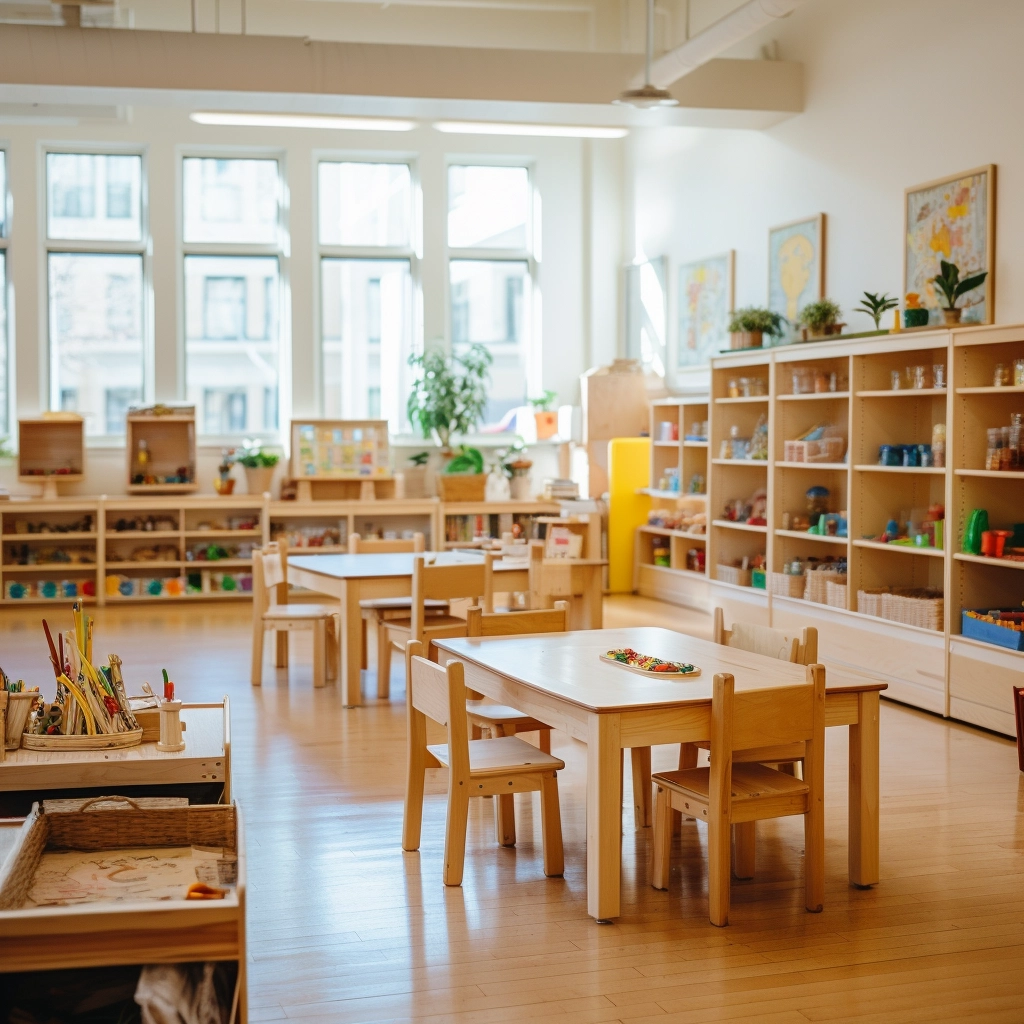Is your classroom filled with kids who love picking up bugs, sorting rocks, or watching birds? Do they focus better outside than inside? Do you wonder if their connection with nature could be more than play — and a sign of naturalistic intelligence? Could being “nature smart” really influence how they learn and grow?
What you’re seeing is called naturalistic intelligence, also known as naturalist intelligence. It’s the ability to recognize, categorize, and interact with nature. In early childhood education, nurturing this form of natural intelligence improves observation, empathy, and cognitive development. Understanding the definition of naturalistic intelligence helps educators create learning environments that bring out the best in children who are drawn to the natural world.
This guide will show you precisely what naturalistic intelligence is, why it matters in early childhood education, and how you can use it to transform your classroom into a space where children thrive mentally, emotionally, and naturally.
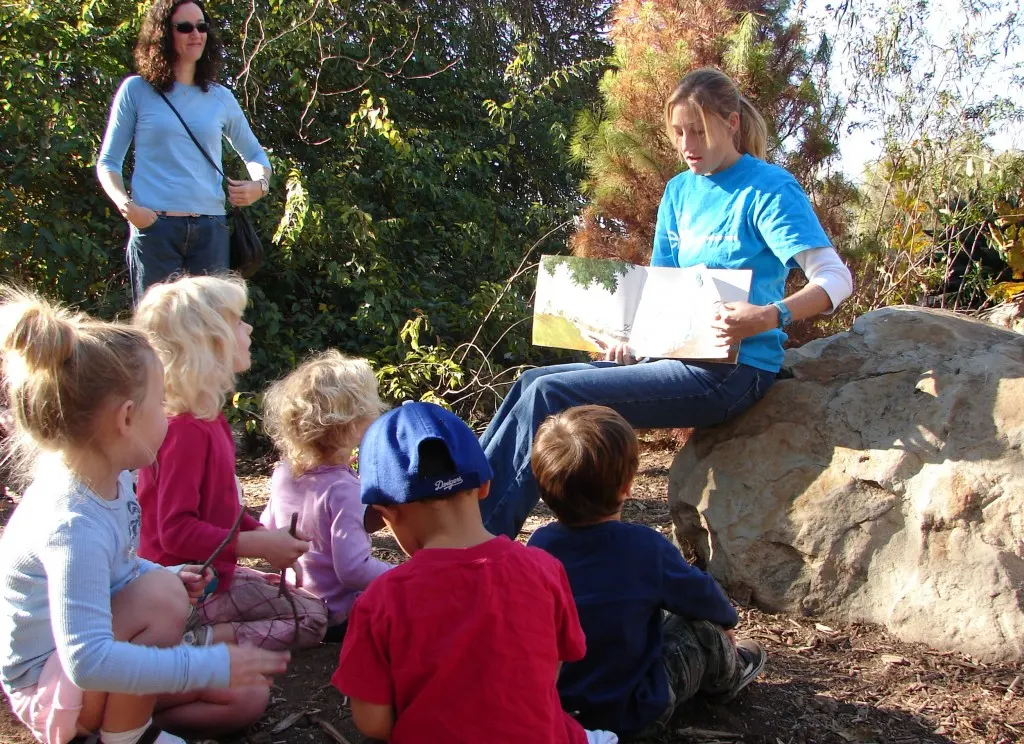
Naturalistic Intelligence Definition
Naturalistic intelligence, also known as naturalist intelligence, is one of the multiple intelligences identified by Harvard psychologist Howard Gardner. At its core, it refers to a person’s ability to identify, classify, and draw connections between elements in the natural world, such as plants, animals, weather patterns, rocks, and ecosystems.
This intelligence often appears early in childhood and manifests as a deep interest in nature and natural systems. Children who show signs of naturalistic intelligence are usually curious about animals, fascinated by how things grow, and comfortable outdoors. They tend to observe patterns in the environment and notice small details that others may overlook.
Educators often overlook this form of natural intelligence because it doesn’t always present itself in traditional academic ways. However, in Montessori and Reggio Emilia settings, where real-world learning and hands-on experiences are encouraged, children with strong naturalistic tendencies are often the ones who thrive the most.
Characteristics of Naturalistic Intelligence in Early Childhood Education
Children with naturalistic intelligence are easy to spot; these are the kids who can name different types of trees, collect rocks by color or shape, or spend hours watching ants carry food back to their colony. Their minds are tuned into the rhythms and patterns of nature in a way that seems almost instinctual.
Some common naturalist intelligence characteristics include:
- A deep interest in animals, plants, and natural environments
- Sensitivity to changes in weather, seasons, or natural settings
- The habit of collecting, organizing, or categorizing natural objects (like leaves or shells)
- Enjoyment of الأنشطة الخارجية such as hiking, gardening, or simply observing insects
- Strong observational skills and attention to detail
- Curiosity about how living systems work—asking questions like “Why do birds migrate?” or “What do worms eat?”
These children may not always enjoy traditional academic settings, especially if the environment is overly sterile or screen-heavy. But place them in a classroom with natural light, wooden furniture, living plants, and hands-on materials, and they come alive. Their ability to focus, reflect, and engage improves drastically.
هل أنت مستعد لتصميم مساحة تُلهم التعلم؟ تواصل معنا لتصميم حلول أثاث مُخصصة تُلبي احتياجات صفك الدراسي.
Naturalistic Intelligence vs. Other Types of Intelligence
According to Howard Gardner’s theory, humans possess a range of intelligences, each highlighting a different way of learning and interacting with the world. While most people are familiar with abilities like being “good at math” or “artistic,” there are nine intelligences, including naturalistic intelligence, which often goes unnoticed in traditional classroom settings.
Here’s a quick overview of the other eight intelligences:
- Verbal-linguistic intelligence: Strength in language: reading, writing, speaking, and expressing ideas clearly.
- Logical-mathematical intelligence: The ability to think critically, solve problems, and reason with numbers and logic.
- Spatial-visual intelligence: A talent for visualizing objects, recognizing patterns, and mentally manipulating shapes or spaces.
- Bodily-kinesthetic intelligence: Learning through physical movement, hands-on tasks, and coordination.
- Musical intelligence: Sensitivity to pitch, tone, rhythm, and sound. These individuals often understand the world through music.
- Intrapersonal intelligence: Deep self-awareness. These learners are reflective and highly in tune with their inner thoughts and emotions.
- Interpersonal intelligence: Socially intelligent learners who excel in communication, empathy, and collaboration with others.
- Existential intelligence: A more abstract intelligence involving deep thinking about life, spirituality, purpose, and the universe.
These nine intelligences together reflect the full spectrum of human potential, not just academic strengths but also emotional, physical, creative, and environmental abilities. Naturalistic intelligence adds an essential dimension to this framework, reminding us that understanding the world also means understanding the natural world and our place within it.
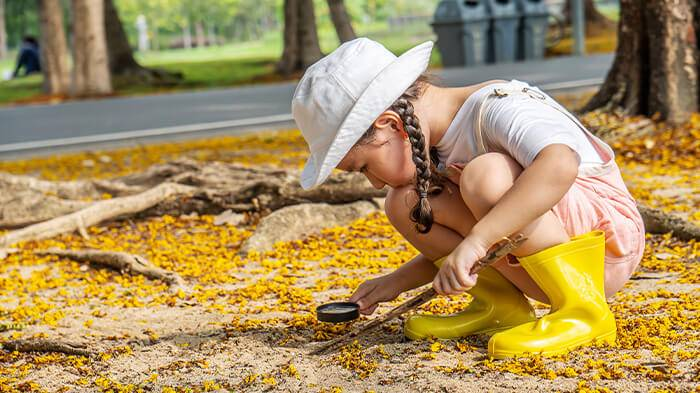
How to Develop Naturalistic Intelligence?
Developing naturalistic intelligence in early childhood is not just about what children do; it’s about how they are encouraged to think, observe, and relate to the living world. The development of this intelligence depends on the environment, mindset, and adult support, not just the occasional outdoor activity.
Integrate Nature into All Areas of the Curriculum
To support naturalistic intelligence, nature should be included across all areas of learning. In language lessons, children can describe what they see during outdoor exploration. In math, they can count petals, sort leaves, or measure water. In art, they can use natural materials like pinecones, twigs, or flower petals for creative expression. Even in social studies, children can learn about how different cultures live in harmony with nature.
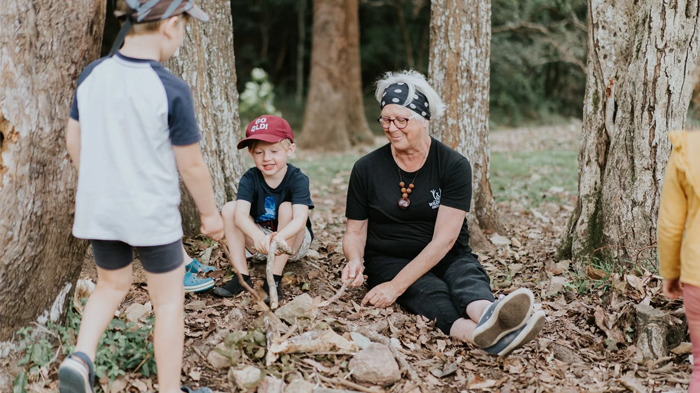
Embrace Child-Led Exploration
Rigid lesson plans limit the development of naturalist intelligence. Instead, create flexible learning environments that allow children to follow their interests, whether that’s watching a ladybug for ten minutes or asking why clouds move. Their natural engagement often reveals more than a structured science lesson.
Lead Environmental Stewardship Activities
Developing naturalistic intelligence also means encouraging children to take care of the environment. When children are involved in small but impactful activities such as recycling, sorting waste, composting, or helping plant trees, they begin to understand their role in protecting the planet.
These real-life opportunities help them connect their knowledge to action. Environmental responsibility becomes something they feel, not just something they learn. Supporting this behavior in early childhood lays the foundation for thoughtful, respectful, and eco-aware individuals with strong natural intelligence.
Build a Nature-Infused Environment
A child’s surroundings deeply impact how they think and learn. To support natural intelligence, classrooms should include natural light, earthy colors, wood materials, plants, and open access to outdoor areas. It’s not about decoration; it’s about creating a calm, sensory-rich space that invites observation.
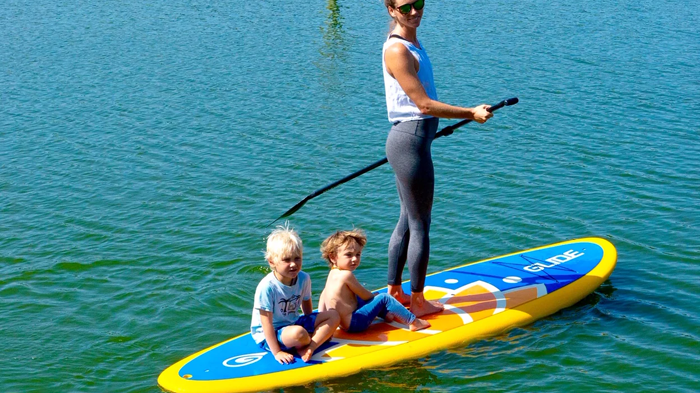
Encourage Connection
Facts about animals or ecosystems are helpful, but naturalistic intelligence thrives on emotional connection. Teach children to care, not just to identify. Empathy for living things, whether plants, bugs, or birds, is just as important as knowing what they’re called.
Animal Interactions
Introducing safe and age-appropriate animal interactions in early childhood classrooms, such as feeding fish, watching ants, or caring for snails, supports both emotional and cognitive development. These experiences allow children to connect directly with living beings and build lasting respect for all forms of life. By observing or caring for animals, children develop a stronger sense of empathy, attention to detail, and awareness of life cycles.
هل أنت مستعد لتصميم مساحة تُلهم التعلم؟ تواصل معنا لتصميم حلول أثاث مُخصصة تُلبي احتياجات صفك الدراسي.
Activities to Stimulate Naturalistic Intelligence
If you’re working with preschoolers or kindergarten-aged children, integrating nature-based learning isn’t just beneficial; it’s essential for developing naturalistic intelligence. The earlier we give children the space to explore the living world, the more confident, curious, and connected they become. Below are simple, practical, and classroom-ready activities that can help stimulate naturalist intelligence, even in urban kindergartens.
Nature Walks with Purpose
A structured nature walk helps children engage all their senses and develop sharp observation skills. This kind of activity encourages them to notice patterns in the environment, one of the hallmarks of naturalistic intelligence. You can provide clipboards and magnifying glasses, and guide children to collect fallen leaves, observe bugs, or record bird calls. Asking questions like “What do you see that’s different from last time?” turns an ordinary walk into a focused, educational experience.
Classroom Gardening
Gardening connects children to life cycles, seasons, and the cause-and-effect relationships found in nature. It builds natural intelligence by fostering patience, responsibility, and an appreciation for how living things grow and change. You don’t need an ample outdoor space. A few pots on a windowsill can do the job. Have kids plant fast-growing seeds like beans or radishes, water them daily, and track their growth using pictures or a simple growth chart.
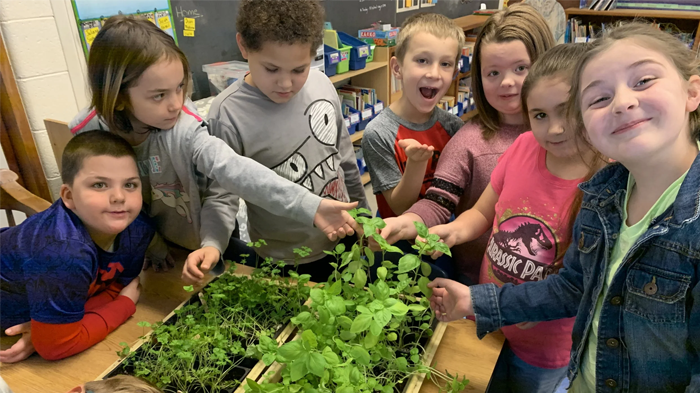
Caring for Class Pets or Insects
Interacting with animals gives children real-life experience in observing behaviors, understanding habitats, and practicing empathy. This supports not only naturalist intelligence but also emotional development. Choose easy-to-care-for animals like goldfish, stick insects, or snails. Involve children in feeding routines, cleaning habitats, and tracking changes. Even a worm compost bin can become a fascinating, interactive biology lesson.
Nature Sorting & Classification Activities
Sorting and categorizing natural items develop children’s ability to notice details, make comparisons, and think scientifically, key components of naturalist intelligence. Set up trays with items like pinecones, rocks, leaves, or shells. Have children group them by color, size, texture, or type. Later, introduce simple field guides or picture cards to practice identifying common species or objects found outdoors.
Nature-Based Art Projects
Creating art with natural materials encourages children to observe the physical features of objects more closely, stimulating their nature-smart awareness in a creative context.

Provide items like bark, leaves, petals, and twigs, and let children create collages or rubbings. You can also use natural pigments like beet juice or turmeric water for painting. These projects integrate naturalistic intelligence with sensory and visual learning.
Nature Storytelling & Journaling
Reflecting on nature experiences through stories or drawing allows children to internalize what they see and feel outdoors. This bridges naturalist intelligence with linguistic and emotional expression. After an outdoor activity, ask kids to draw what they saw or write a few words (or dictate to an adult). Prompts like “If you were a tree, what would your day look like?” or “What did the wind tell you today?” can inspire creative, nature-based thinking.
Weather Station
Tracking the weather teaches children about daily environmental changes and builds awareness of natural systems, essential to developing natural intelligence. Set up a simple weather station with tools like thermometers, wind socks, and rain gauges. Assign students to be the “weather reporter” each day, recording data and discussing how the weather affects plants, animals, and their daily routines.
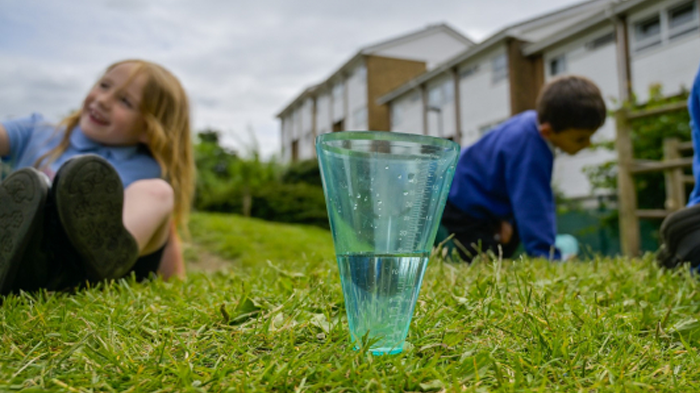
Each of these activities doesn’t just pass the time; they awaken a deep curiosity and connection with the natural world. When you give children hands-on, sensory, and emotionally meaningful experiences with nature, you’re not just teaching them science; you’re helping them grow into thoughtful, observant, and environmentally conscious individuals.
How to design a kindergarten with natural intelligence?
Designing a kindergarten that nurtures naturalistic intelligence goes beyond adding a few plants to a classroom. It requires an intentional approach, one that combines the physical environment, teaching philosophy, and materials to promote children’s connection with nature, observation skills, and environmental responsibility.
Here’s what that looks like:
Use Natural Materials
Children are more likely to engage with their environment when it feels real. Avoid overly plastic or artificial textures. Instead, choose furniture and tools made from natural materials like solid wood, rattan, cotton, and stone.
Our Montessori-style tables, chairs, and open shelves are made from responsibly sourced timber—warm to the touch, calming to the eye, and durable enough for everyday use.
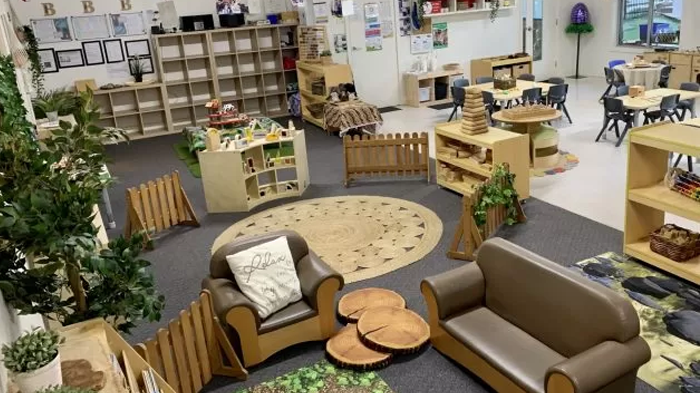
Integrate the Indoors and Outdoors
Design classroom spaces that flow naturally into the outdoors. Use sliding doors, open-air patios, or even covered decks to create flexible learning environments.
Create outdoor “classrooms” with shaded areas for reading, small tables for art projects, or garden beds for plant care. If space is limited, even a small balcony garden or vertical planter can provide meaningful contact with nature.
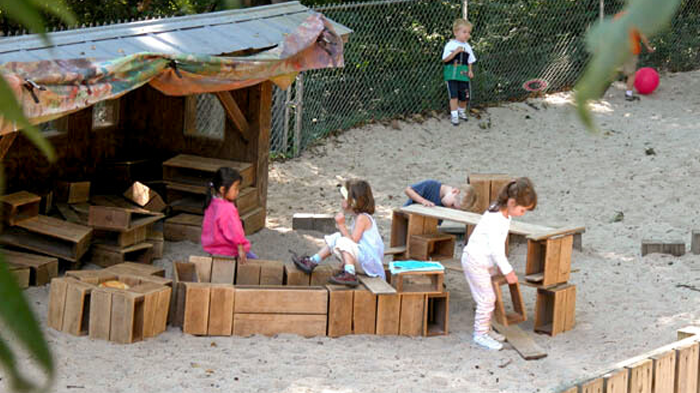
Create Nature Stations and Sensory Corners
Dedicate classroom space to rotating nature stations, with baskets of leaves, rocks, flowers, soil, and tools like magnifying glasses or bug viewers. Include sensory corners that feature sand, water, clay, and other earth-based materials.
This setup promotes sorting, comparing, and classification, all essential skills for developing natural intelligence.
Prioritize Light, Air, and Space
A well-lit, ventilated classroom with large windows not only improves mood but also keeps children visually connected to the natural world. Position play areas near windows, where kids can watch clouds, sunlight, birds, and rain.
Natural tones and minimalistic layouts also help reduce overstimulation, keeping children calm and focused.
Add Living Elements
Incorporate plants, animals, or ecosystems into your classroom design. From potted herbs to class pets, living things spark curiosity and teach responsibility. A small aquarium, worm bin, or indoor greenhouse can become a powerful part of your learning environment.
Famous Figures With Naturalistic Intelligence
Here are a few well-known individuals who demonstrated strong naturalistic intelligence in their work and lives:
- Charles Darwin – Developed the theory of evolution through years of observing and categorizing species in nature.
- Jane Goodall – Revolutionized primate research by studying chimpanzees in their natural habitat with empathy and patience.
- David Attenborough – Brought global attention to biodiversity through decades of environmental documentaries.
- Rachel Carson – Sparked the modern environmental movement with her writing on nature and ecological responsibility.
- E.O. Wilson – Advanced the study of ecosystems and biodiversity with a lifelong passion for insects and the natural world.
- Wangari Maathai – Used her environmental knowledge to lead massive tree-planting and land restoration efforts in Africa.
- John Muir – Advocated for national parks and nature preservation through his profound spiritual and scientific connection to the wilderness.
These well-known individuals all exemplify the core of naturalistic intelligence: profound observation, emotional connection with nature, and a strong drive to understand and protect the natural world. Whether through science, storytelling, activism, or exploration, they each used their nature-smart abilities to influence how humanity relates to the environment. Their lives prove that naturalist intelligence isn’t just an academic trait; it’s a powerful force for real-world change.
For children who show early signs of naturalist intelligence, this same awareness can lead to meaningful and rewarding careers. From scientific fields like biology, botany, and environmental research to hands-on roles in farming, conservation, and education, there are many paths where a strong bond with nature becomes a strength, not a side interest.
خاتمة
In a world where climate change, habitat loss, and environmental instability are no longer distant concepts but daily realities, fostering this kind of intelligence is no longer optional; it is essential. By helping children develop a deep respect for nature, we are also preparing them to make thoughtful, responsible choices about the world they will inherit.
Educators, school leaders, and furniture designers all have a role to play. Because when a learning space is aligned with nature—in its materials, its layout, and its philosophy—it does more than support naturalistic intelligence. It becomes a place where children learn not just about the world, but how to care for it.
Moreover, that is the most important lesson we can teach.
الأسئلة الشائعة
What are the weaknesses of naturalistic intelligence?
Children with strong naturalistic intelligence may struggle in indoor or overly structured environments. They can become bored or distracted without hands-on, nature-based learning. Some may also be emotionally sensitive to environmental issues, which can lead to stress if not supported properly.
How can I tell if my child has strong naturalistic intelligence?
If your child enjoys being outdoors, often observes animals or plants closely, collects natural items, and shows concern for the environment, they likely have strong naturalist intelligence. Curiosity about nature and a desire to care for living things are key signs.






